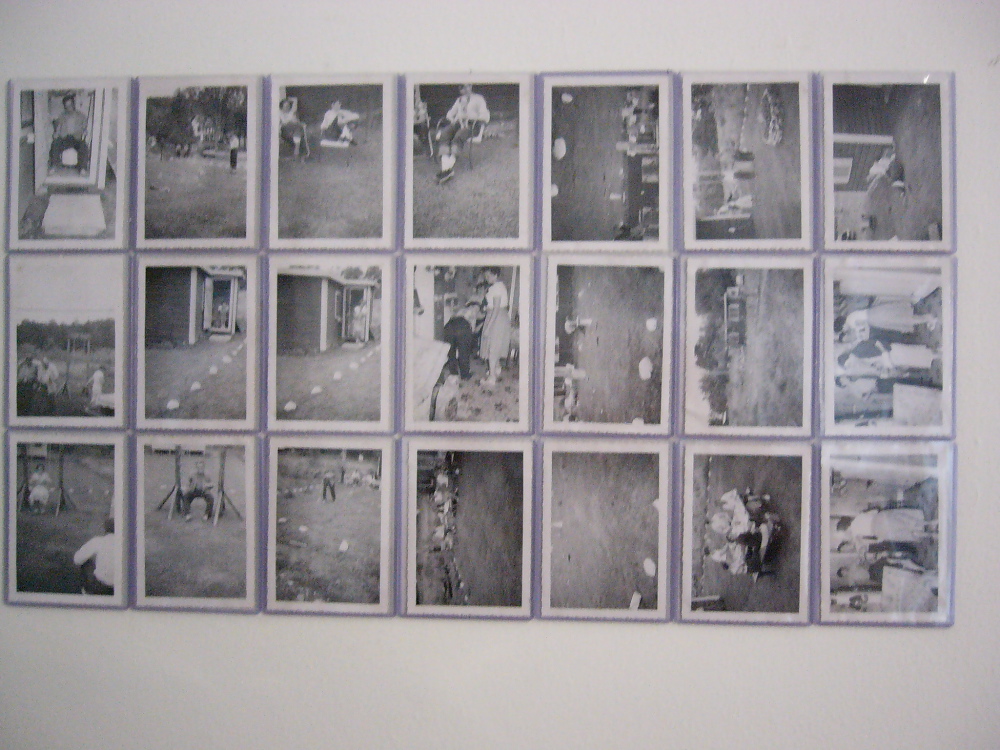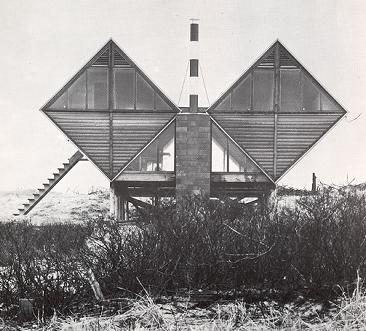Schwarz
View current page
...more recent posts
"Nine excellent 5" x 3 1/3" snapshot photos of a good sized tank being installed. It looks like a water tank. The photos are dated Oct. 1959. The first two pictures look like they have a blueish tint but they don't.The crane truck moving the tank has a Charleston WVA address on the door. The smaller flatbed trailer truck says Fred C. Burns Marlinton WVA."
herman miller babble

stream afropop
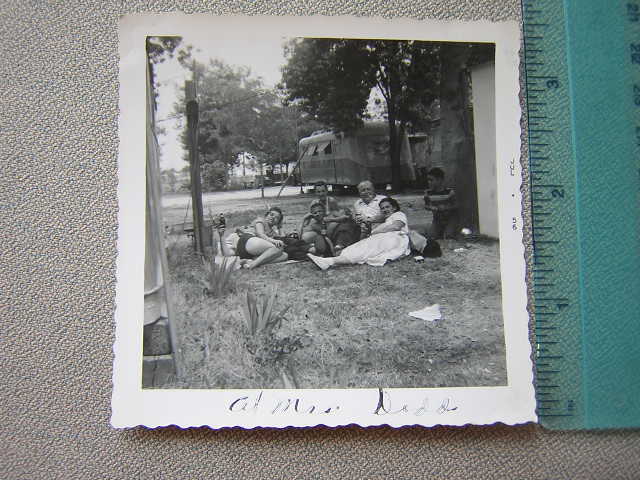
lords of dogtown prereview :
it fuckin' rocks!
In the Guggenheim, your eye is usually drawn away from the art to its soaring center space. Buren reverses this in a very John Cage way. Having the walls empty creates a void that the eye and mind fill. Unexpected things come into high focus: cracking walls, paint swellings and serrations, dust bunnies, and missing and broken panes of glass. The Guggenheim comes alive in new ways, entropy emerges as an aesthetic quality, and the whole museum turns into a living Thomas Struth photograph. You can make out where parts of "The Aztec Empire" exhibition recently were, or where Matthew Barney climbed the parapet. Not only is this fairly thrilling and wistful, it makes you recognize how every detail is crucial in the delivery mechanisms of art that we call museums.
design*sponge throws shit fit"wrong sponge"? wait till she hears about design losing its edge.

hot 45k singlewide
[....]
Design's cutting edge has been removed because there are too many children at the table now for anything sharp, and the fashion heat of only a few years ago - which generated singles-only magazines like Wallpaper, with its label-lust crossovers from clothing to interior design - has become a usable stylishness, as in casual work clothes that translate easily to the occasional party.
Wallpaper's place in the sun has become Dwell's, with its young family-values version of high design: the return of domesticated thinking like Mary and Russel Wright's. And not coincidentally, of prefabricated housing: a prefab FlatPak house, designed by Charlie Lazor, a Minneapolis architect, was exhibited as a product, the largest piece of furniture at the fair.
But in terms of design's potential to invent and imagine, to solve and foresee, to anger or excite, it's a post-fab, as in fabulous, moment. The proliferation of makeover shows on television, on which your home can be shown the door in 30 commercially interrupted minutes, makes it clear just how shallow the pool of thought is in contemporary design.
[....]
Early film-makers delighted in capturing cities on screen. Their work takes us on a tram ride back in time, says Patrick Keiller . Until the mid-1900s, most films were one to three minutes long, and consisted of one or very few unedited takes. The Lumière company's films, for example, are typically 48 to 52ft long and last about a minute. They were made by exposing a complete roll of film, usually without stopping. Most were actualities, not fiction. Cinematographers would sometimes pause if there was a lull in the action, or if the view was blocked, but other kinds of editing were unusual. The reconstruction of time by joining individual shots together was an aspect of film-making that began to dominate only after about 1907.
Shigeru Ban is called the "paper architect." Mister Ban is an architect in Tokyo known for his designs of temporary shelters made of paper. Many of his designs, such as the "Paper Log House," are built with used cardboard tubes.
Mister Ban designed such houses for people in Kobe, Japan, after the nineteen ninety-five earthquake there. He also designed a community gathering place. More recently, his paper houses provided shelter for people in Turkey and India after earthquakes hit those countries.
screen goo via alex
also ran : shoe goo
gunge : read at your own risk

(untitled) polaroid
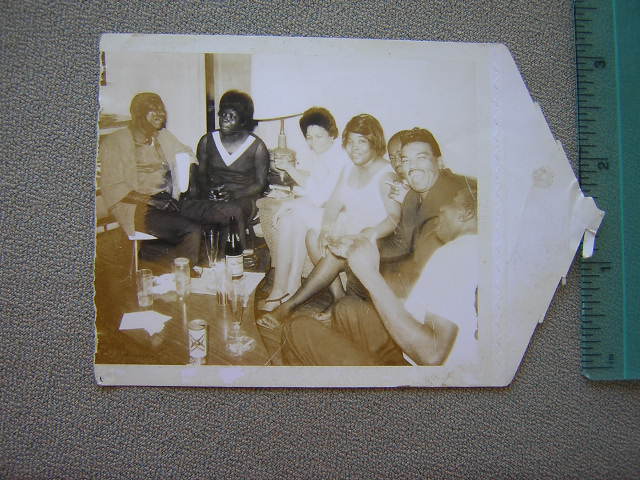
(untitled) polaroid
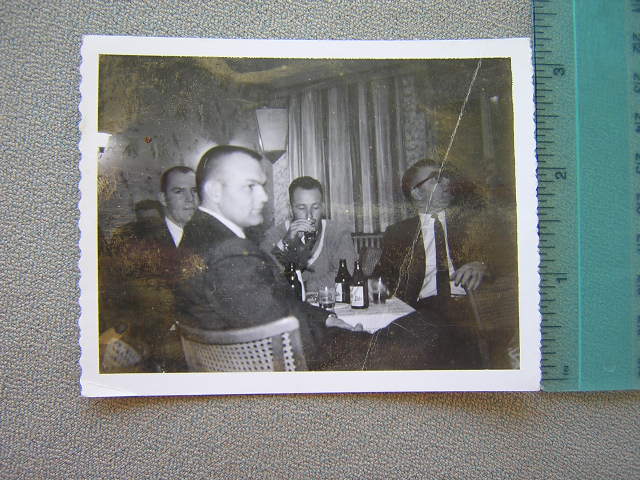
(untitled) polaroid
There are three stories about where the first demolition derby was held. Islip Raceway (Long Island, NY), Hales Corner Raceway (Hales Corner, WI), and an unknown town in Ohio. The first and only story with creditable proof is that Larry Mendelson, a 28 year stock car racer noticed that the most cheering and excitement happened when cars crashed. He held the first demolition derby in 1958 at Islip Raceway. Another story is that Hales Corner Raceway had held a demo years previous to Islip. According to legend, 'Crazy Jim' Groh had a few too many cars on his dealership lot. So he got a few people to drive them as a promotion. The only other proof to back this story are the Happy Days episodes 64, 64, 66 'Fonzie loves Pinkie ...got 24 bucks?
walls of new york
In the immediate aftermath of 9/11, Fareed Zakaria wrote a 6,791-word cover story for Newsweek titled "Why Do They Hate Us?" Think how much effort he could have saved if he'd waited a few years. As we learned last week, the question of why they hate us can now be answered in just one word: Newsweek.
"Our United States military personnel go out of their way to make sure that the Holy Koran is treated with care," said the White House press secretary, Scott McClellan, as he eagerly made the magazine the scapegoat for lethal anti-American riots in Afghanistan. Indeed, Mr. McClellan was so fixated on destroying Newsweek - and on mouthing his own phony P.C. pieties about the Koran - that by omission he whitewashed the rioters themselves, Islamic extremists who routinely misuse that holy book as a pretext for murder.
That's how absurdly over-the-top the assault on Newsweek has been. The administration has been so successful at bullying the news media in order to cover up its own fictions and failings in Iraq that it now believes it can get away with pinning some 17 deaths on an errant single sentence in a 10-sentence Periscope item that few noticed until days after its publication. Coming just as the latest CNN/Gallup/USA Today poll finds that only 41 percent of Americans think the war in Iraq is "worth fighting" and only 42 percent think it's going well, this smells like desperation. In its war on the press, this hubristic administration may finally have crossed a bridge too far.
Let's stipulate flatly that Newsweek made a serious error. For the sake of argument, let's even posit that the many other similar accounts of Koran desecration (with and without toilets) by American interrogators over the past two years are fantasy - even though they've been given credence by the International Committee of the Red Cross and have turned up repeatedly in legal depositions by torture victims and in newspapers as various as The Denver Post and The Financial Times. Let's also ignore the May 1 New York Times report that a former American interrogator at Guantánamo has corroborated a detainee's account of guards tossing Korans into a pile and stepping on them, thereby prompting a hunger strike. Why don't we just go all the way and erase those photographs of female guards sexually humiliating Muslims (among other heinous crimes) at Abu Ghraib?
Even with all that evidence off the table, there is still an overwhelming record, much of it in government documents, that American interrogators have abused Muslim detainees with methods specifically chosen to hit their religious hot buttons. A Defense Department memo of October 2002 (published in full in Mark Danner's book "Torture and Truth") authorized such Muslim-baiting practices as depriving prisoners of "published religious items or materials" and forcing the removal of beards and clothing. A cable signed by Lt. Gen. Ricardo S. Sanchez called for interrogators to "exploit Arab fear of dogs." (Muslims view them as unclean.) Even a weak-kneed government investigation of prison abuses (and deaths) in Iraq and Afghanistan issued in March by Vice Adm. Albert T. Church III of the Navy authenticated two cases in which female interrogators "touched and spoke to detainees in a sexually suggestive manner in order to incur stress based on the detainees' religious beliefs."
[....]
[....]
Fire Yourself
To his careers as a sometimes cash-challenged real-estate mogul, fragrance shill, and reality-show blowhard, Donald Trump has added architecture critic.
Standing beside a 9-foot-high architectural model in the atrium of Trump Tower, he announced that he had signed onto a plan devised by architect Herbert Belton and structural engineer Ken Gardner to rebuild the destroyed Twin Towers as a fortified version of the Minoru Yamasaki-designed originals. If the Freedom Tower is built, the world-class diplomat declared, ``the terrorists win.''
Trump decried the Freedom Tower design as ``not appropriate for freedom,'' and ``a skeleton.''
Belton and Gardner have been schlepping this ghastly proposal about for over a year. The details are predictably depressing: memorials in the old footprints that look like abandoned garden- show displays, a cluster of 12-story Miami-condo look-alikes posing as a memorial museum and ``Hall of Heroes.''
Lest fans fear Trump has lost his priapic interest in height for its own sake, a crude telecommunications antennae plunked on the north tower rises high enough to claim world's-tallest status.
Neither Belton, Gardner, nor Trump have found supporters among the firefighters, police, victims' families, downtown residential community (many of whose windows would be darkened by these hulks), nor the downtown business community (with the exception of a former tenant, John Hakala, who has energetically promoted the plan).
Shameless Synergy
Trump could not be bothered articulating what these feeble fakes symbolize. Let me help. These bumper stickers pointed at the sky express a crude, empty defiance.
Trump swore he would not stick his name on the towers in shiny metal letters. So what's in it for him? Well, an ad for his fragrance was pasted on the pink marble walls behind the model, well within range of the two-dozen TV cameras that showed up for the circus-like event. Trump mentioned ``The Apprentice'' at least half-a-dozen times, and said he may display the model in an upcoming episode. That's synergy for ya! Trump has defined shamelessness down, no easy feat in our civility-challenged era.
[....]
The strains are evident in the design for a new museum that will house the International Freedom Center and the Drawing Center, unveiled yesterday by the Lower Manhattan Development Corporation. The building, by the Norwegian firm Snohetta, is strangely seductive: with some fine-tuning, it could even become a fascinating work. It is already closer to the standard set by Santiago Calatrava's soaring glass-and-steel transportation hub than that of the site's troubled Freedom Tower, for example.
this is one of my favorite local JC red meat political hot topics. Cliffie Waldman's relentless attempts to create restrictions on dogs in vanvorst park in jersey city through fear mongering :
FYI...... We went thru this charade a few years back with Cliff Waldman...
Last time, right before the vote, the "Friends" changed the boundaries of the proposed dog run and people voted based on the original dimensions... What's also interesting is that Steve Fulop doesn't officially become the Downtown Councilman until July 1st.... What's the rush???? This is the first I've heard of this and I'm in the park daily.... So I surmise it's another bait & switch before Fulop has a chance to get involved.... I suggest that if you're a dog owner you get your friends out there to vote, for better or worse..... PLEASE PASS THIS EMAIL ALONG........
Dog run vote set for June 4
Thursday, May 19, 2005
Letters to the Editor
The Jersey Journal
Re: June 4 Van Vorst Park vote on pet-free, pet-friendly park areas and a dog run.
The Friends of Van Vorst Park (FVVP), in association with the City of Jersey City's Office of the Mayor, its City Council, its Law Department and its Department of Public Works, announces the holding of a democratic ballot for all adult Jersey City citizens to determine the fair solution to preserving some portion of small, historic Van Vorst Park's lawns for safe, clean human use, while providing resources for dogs also, like a dog run. This solution will help both humans and dogs have what they are deprived of: healthy lawns and a place to run free.
This vote will take place from noon to 3 p.m. on Saturday, June 4 by the gazebo. This vote will be hosted by the FVVP in association with the VVPA, groups of the Jersey City Parks Coalition and other neighborhood groups. It will be overseen by Public Works Director John Yurchek. It will repeat the same ballot and outline that was drawn up three years ago. The new City "Pet Free/Pet Friendly" ordinance was spearheaded by the FVVP in 2000. It requires the oversight of the director of Public Works, which is why we are repeating the process now. Director Yurchek has committed himself to immediately implementing the community choices, including a possible dog run.
If a dog run is chosen, all interested dog owners will have input into its design. Though the city has a financial limit to how much they can spend on a dog run, we will support the ideal design (aesthetically and hygienically) and will pursue collateral grants to get any needed additional funds.
It is hoped that this first application of this quality-of-life ordinance will spread throughout Jersey City to improve all of its parks and public spaces. It is also hoped that this will be the beginning of what will become Mayor Healy's legacy of being our great city's Quality of Life Mayor. We also thank Downtown Councilman-elect Steve Fulop's support of the community empowerment approach to park development.
We hope that all interested citizens will participate in this important community decision.
DR. CLIFFORD S. WALDMAN FVVP CO-CHAIRMAN JERSEY CITY
Mia Scanga Executive Director- Talking Politics TV Show Jersey City, Channel 51 on Mondays at 9:30 pm, Wednesdays at 8:30pm & Thursdays at 7:30 pm; Hoboken, North Bergen, Union City and Weehawken, Channel 19 on Thursdays at 9:30 pm. See SEVENTEEN of our shows video streamed off our website: www.TalkingPolitics.net. 201-200-1958
Thanks Mia, Waldman is such a nut.
Q. The terrace of our New York apartment faces due north, with almost no direct sun. Impatiens and begonias are the only flowering plants we have found for shade. Can you suggest other ornamentals, flowering or otherwise?from the nyt
A. Unobstructed north light is usually bright enough for any plant that can thrive in partial shade, and if you include hardy perennials that gives you a long list of choices A collection of ferns could be a beautiful study in greens: some blue, some silvery, some edged in black. For flowers, consider plumelike astilbes, statuesque golden ligularias and - especially if space is tight - small woodland bleeding hearts like Dicentra eximia and D. formosa.
Unlike the larger garden bleeding heart (D. spectabilis), these little pink or white beauties do not go dormant in midsummer. While bloom is most abundant in spring, they flower intermittently well into fall.
Woodland bleeding hearts have fine-textured, blue-green leaves that look best when balanced by something broader. Try heucheras, bergenias or hostas, or mix things up with tropicals like coleus and caladium.
And do not forget the pansy tribe, which includes violets and violas. In a cool, north-facing location, they can bloom all summer. Sources for partial shade perennials include Fieldstone Gardens, (207) 923-3836 or fieldstonegardens.com and Busse Gardens, (800) 544-3192 or bussegardens.com.
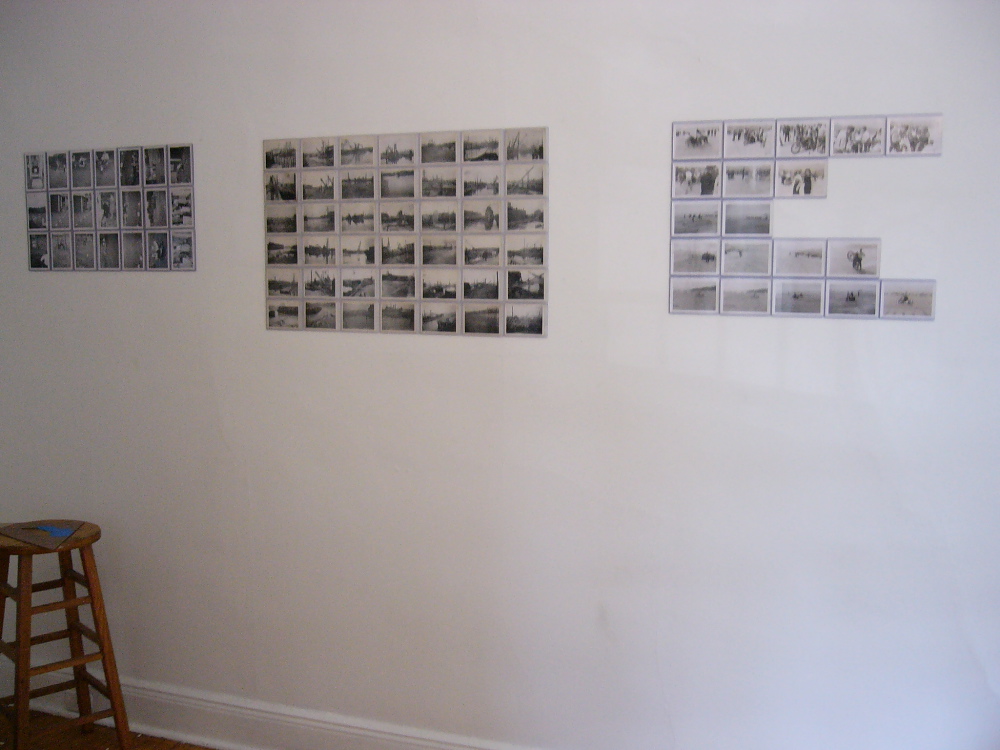
smash-em-up derby
no we're not on the lincoln park house tour
down by the boardwalk somewheres in asbury park
[....]
consider a question posed by artist Robert Irwin: How did art go from the hyper-realism of David to the total abstraction of Malevich in less than 100 years? Why was a gloriously perfected pictorial machine swapped for one that was unknown and unstable? The reasons for this are varied, complex, and buried in the psychic ruptures that took place in the 19th century. The question, however, contains part of the answer. As scientific knowledge increased, multiplicity replaced certainty, relativism grew, our experience of our world became more unknown and unstable, and the hierarchical way we pictured the world no longer seemed adequ ate or accurate. Single-point perspective and realism were originally devised to present a kind of double-positive: Things were rendered realistically in order to be known. This worked visual wonders for several hundred years. However, by the mid 19th century it became evident that there was a latent negative lurking in the double-positive: Things were bein g named but they weren't being known. A hole formed in the ozone of representation. Technique was only leading to more technique, perspectival space unraveled, and representation began to feel suppressive and deficient.
A visual analog for indefiniteness and instability had to be devised. A space for intuition was needed. Ab straction was one antidote. The wish was that abstraction would reverse the charge of the double-positive by presenting a double-negative: It would portray a world beyond naming. In this way a negative would be transformed into a positive. Although it led to astounding things, this premise has at least two glaring faults. First, understanding is an essentially useless measure for art. No one "understands" a Botticelli or any work of art. Second, there's ultimately no difference between abstraction and representation; both are simply depicting systems. Abstract space exists in representational art and vice versa.
From the start, many who touted abstraction made grandiose claims for it. Soon formalists took up residence in abstraction. Today tiresome, mostly male academics who can't get over Greenberg persist in draining the juice from nonobjective art. Yet abstraction is far sexier than these dogmatists imagine. Abstraction is a way of seeing that which cannot be seen. It was one of the more massive gambles in art history. Not even Picasso went fully abstract, believing that it implied the death of painting. Those who took the full leap into the nonobjective void were heroes.
[....]
Textiles magnate Donald Maharam, who recently bought Martha Stewart’s Gordon Bunshaft– designed house in East Hampton for about $9 million, wants to make it very clear that he’s sorry, but he has to tear it down. Because she wrecked it. The walls and floor are missing, plywood stands in for doors, the roof leaks, and there’s a five-foot-deep hole in the floor filled with sand that was supposed to be a basement but resembles, Maharam says, “a Bavarian bathhouse” instead. However, it’s on Georgica Pond. “It’s really not a house anymore,” he says. “It’s an exquisite piece of property. That’s why I bought it.” MoMA, which was willed the house by Bunshaft and then sold it to Stewart, refused to comment.another hamptons knockdown "what bastids"
Gangster Computer God Worldwide Secret Containment Policy
think dave emeory off the thorozine - via kenny g fmu blog
rat rod pick of the week
untitled (lawn party) 27 1/2" x 15 3/4", photographic prints, acrylic sleeves, double-sided foam tape - Bill Schwarz, May17th 2005
move over aric chen, curbed has started an alternate sub-blog called gutter seemingly dedicated to catty remarks on the subject of architecture and its folk. yeah i read this shit (and it is shit) looking for red meat. ill get back to you if i find anything good.
architecture-radio thom mayne talks
granta 89: the factory
from vz
harman kardon sound sticks II a sound solution
recovering architect
oxymoron or plain old moron
But the proposal put before you by city staff is an ambush containing all those destructive consequences, packaged very sneakily with visually tiresome, unimaginative and imitative luxury project towers. How weird, and how sad, that New York, which has demonstrated successes enlightening to so much of the world, seems unable to learn lessons it needs for itself. I will make two predictions with utter confidence. 1. If you follow the community’s plan you will harvest a success. 2. If you follow the proposal before you today, you will maybe enrich a few heedless and ignorant developers, but at the cost of an ugly and intractable mistake. Even the presumed beneficiaries of this misuse of governmental powers, the developers and financiers of luxury towers, may not benefit; misused environments are not good long-term economic bets.--jane jacobs on the williamsburg/greenpoint rezoning plan
Q As a relatively unknown architect based in Portland, Ore., how did you manage to win the competition for the redesign of 2 Columbus Circle in New York, which houses the Museum of Arts and Design?
from the nyt 2005 architecture magazine
potter george ohr
"trophy homes" suck
"monster homes" suck
"McMansions" suck
"starter castles" suck
"plywood palaces" suck
"bash and builds" suck
"bigfoots" suck
tiny houses rock walden rocks dave rocks
32 unknown pollocks discovered
Dia plans to move from its two spaces on West 22nd Street to 820 Washington Street, at Gansevoort Street. The new site is at the entrance to the High Line, the abandoned railway line 30 feet above the blocks between 10th and 11th Avenues, from Gansevoort Street to 34th Street, which is about to become a park with the help of $50.7 million in city money.
thanks to slema
the red hot jazz archive
from the red hot fmu message board
the ivory billed woodpecker spotted in ny
dee dee ramone -LIVE AND INTERVIEW AT E.J.'S IN PORTLAND, OREGON, JANUARY 19, 2000
joey and marky on stern
rare mp3s etc
ho boy! cribs marathon today on mtv!

By BRUCE LAMBERT
Published: May 6, 2005 for NYT
As soon as it was built in 1959, the beach house at 615 Dune Road in Westhampton Beach caused passers-by to stop in their tracks.
"The house stood out like a spaceship that landed on Dune Road, so it was quite an attraction," said Jonathan S. Pearlroth, who inherited the house.
Its unusual "double-diamond" geometric design, with two adjoining rectangular boxes tilted on their edges, quickly became an icon of modernism and was featured in magazines and books.
But the Pearlroth family eventually reached the reluctant conclusion that the double diamonds would have to go. It needed more room, Mr. Pearlroth said; old additions needed replacing and new laws barred expanding the original structure because it is in a storm damage zone. So the family hired an architect to design a larger replacement house and is ready to clear the site as early as May 15.
Hoping to rescue the house, preservationists are campaigning to move it to a new site, restore the original condition and transform it into an architecture museum.
"We're racing against the clock, trying to get the funding just to do the move," said Jake G. Gorst, the grandson of the house's architect, Andrew M. Geller.
Over the decades, the house had gradually faded from sight. Despite the beachfront locale, wind and waves built up the dunes so much that the house lost its prominence and even its ocean view. "It was buried," Mr. Pearlroth said.
Neighboring houses sprouted, and it was further hidden when the Pearlroth family expanded its living space by building decks and bedrooms around the original structure, which is just 600 square feet.
If preservationists succeed in salvaging the house, they can thank a series of lucky breaks.
Mr. Gorst, a filmmaker who was working on a documentary about his grandfather, interviewed Mr. Pearlroth in February. It was then that the owner sadly explained his demolition plans.
"We have such sentimental ties to the house - I loved it - it was painful for us to think we would knock it down," Mr. Pearlroth said this week.
The plan caught Mr. Gorst by surprise. But as they talked, a new idea suddenly dawned on Mr. Pearlroth.
"It was like a light went off in my brain," Mr. Pearlroth. "I said, 'Jake, please take the house if you can save it and do something with - it's yours.' "
Mr. Gorst leapt at the challenge, becoming part of the story he was filming. He spoke to Exhibitions International, a nonprofit group in Manhattan promoting 20th-century architecture, which agreed to raise money. Organizers figure they need $50,000 to move the house and $150,000 for restoration.
"It's coming in dribs and drabs so far," said the group's director, David L. Shearer. "We have a long way to go. The problem is the house is not 100 or 200 years old. People don't always appreciate the historic significance and need to preserve modern architecture."
The first hurdle is raising various utility cables so that the house can be slipped underneath. Cablevision has agreed to charge no fee, the organizers said, and they are in talks with the Long Island Power Authority and Verizon about their lines.
If the house can be moved, the next issue is where to put it - especially since vacant waterfront property in the Hamptons is almost as scarce as double-diamond houses and commands princely sums.
Once again, fate is intervening. As word of the fledgling campaign spread, an advocate in the American Institute of Architects, Anne R. Surchin of Sag Harbor, took up the cause.
"All the modern houses are being torn down left and right, and some are real classics," she said in an interview. "Sometimes you don't find out they're in danger till you see the bulldozers."
Linda A. Kabot, a member of the Southampton Town Council, said that after Ms. Surchin "sent me a frantic e-mail" she conferred with a fellow Council member, Steve Kenny. He suggested offering a site on the bay side of Pikes Beach park, a mile down the road.
Next Tuesday, the Town Board will hold a hearing on that proposal. The sponsors expect approval that day, to beat the move-it-or-lose-it deadline.
In one of many endorsements for the hearing, an architecture historian, Alastair Gordon, praised the house as "one of the most important examples of experimental design built during the postwar period not just on Long Island but anywhere in the United States." He called it "witty, bold and inventive."
With the proposed site surrounded by open space and the house to be elevated on stilts to prevent damage from stormy seas, the setting would recreate the original look of 1959, proponents say.
"It could be a wonderful architectural and navigators' landmark," Mr. Kenny said. "Perched high, almost like a work of art on a pedestal, the view looking out over the bay is going to be spectacular."
Mr. Geller, whose résumé includes work on the Lever Building interior, Windows on the World and Lord & Taylor's logo, recalled the Pearlroth house as "a one-of-a-kind" project that he did for fun.
Mr. Pearlroth's mother, Mitch, recruited the architect after reading about another house he designed. Mr. Geller said he studied the site and the family's living habits "previous to any doodling on paper."
Because the Pearlroths lived in New York City, Mr. Geller designed their beach house "to escape from the cell-like appearance of an apartment, to stay clear of four walls." The high-peaked ceilings also invoked the feel of an American Indian tent, he said.
The whimsical house inspired nicknames to match, including the Square Bra, the Box Kite, the Cat, the Milk Carton and the Reclining Picasso.
At 81, Mr. Geller said he was grateful for the effort to save the house. "I'm flattered," he said, "and I'm just thrilled."
jonathan s pearlroth sounds like a total load :
"It was like a light went off in my brain," Mr. Pearlroth. "I said, 'Jake, please take the house if you can save it and do something with - it's yours.' "a light just went of in my brain, let (inheritance-boy) pearlroth pay to move it. creep!
ps: would it kill the nyt and curbed to point out what a sleezy move this is?
housingmaps
tv party i didnt have cable then and completely missed it -
i did manage to catch alot of uncle floyd though. may have had to do with it being on free tv uhf channel 68.
project C-90
shigeru ban
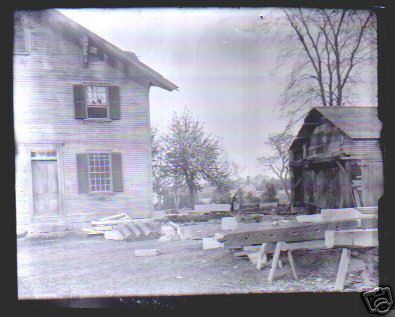
Volunteers will be assigned a zone with about 300 trees, and will be trained to identify species, take measurements and assess health. They will also learn to identify the Asian long-horned beetle, which destroys hardwood trees. Beetle larvae have been spotted in two American elms in Central Park this spring. For years the parks department has been diversifying its tree population to deter insect infestations and the spread of diseases. "If the Asian long-horned beetle is infiltrating a certain area, we should diversify further," Mr. Benepe said. Volunteers "can enlist friends or bring their families," said Jennifer Greenfeld, the director of New York Tree Trust, a program of the parks department and the City Parks Foundation that is running the census. "Some of the folks who did it 10 years ago can't wait to do it again." For information on the census: 311, or www.nyc.gov/treescount.
perplexi
As a result, the major architectural players at ground zero - Mr. Libeskind, Mr. Gehry, Santiago Calatrava, David Childs, Mr. Arad and the Snohetta architects, to name the most obvious - have never sat down in a room together to discuss their growing concerns about the overall plan, let alone exchange ideas about how best to improve it.
This constitutes an enormous squandering of talent, as well as a total disregard for how the creative process unfolds. And it has essentially shut the public out of the process.
So far, such inflexibility has been justified by political calculations. Open discussion of what isn't working, and why, might slow the pace of rebuilding, the thinking goes, and send the wrong message to the world - as if indecision were somehow a sign of weakness. Given how the project has stumbled, that argument is looking more and more specious. And it ignores the fact that the city, and those of us who care about it, will have to live with the consequences of these decisions for decades.
Governor Pataki should take advantage of the most recent delays to take a big step back and rethink what has become a debased process. Planning should be open to intense public scrutiny. And by encouraging the architects to talk with one another and to the public they serve, he could finally take advantage of the talent that he has right under his nose.
right wing real estate blog "curbed" exclaiming 'bout 29-45 million dollar asking prices for modules in the calatrava tower and thi$ guy is yakking about it. that and all the different hats that calatrava wears. so what.
Known for her innovative space planning, Florence Knoll Bassett ("Shu" to her friends) recently designed an installation of her work at the Philadelphia Museum of Art. Since interviewing the legendary designer, I've become one of her many dedicated fans. Bassett defined the look for corporate interiors in the 1950s and profoundly influenced post-World War II design.
Mr. Rampe's departure comes at a particularly sensitive moment for a rebuilding effort that has recently been plagued by bad news. The construction of the Freedom Tower, the site's most prominent structure, is months behind schedule, and faces even greater delays after the New York Police Department last month delivered a disturbing assessment of its security shortcomings. Larry Silverstein, the lead developer of the site, has signaled that he may need hundreds of millions of dollars from the government to address the security concerns.
The decision by the Wall Street firm of Goldman Sachs to shelve plans for building a headquarters near ground zero was another setback. And to this day, three and a half years after the destruction of the two towers, a number of the architects, engineers and designers involved in the rebuilding effort have complained privately that a lack of creativity and communication still besets the project.
EDITOR'S NOTE: ArchNewsNow is going on the (Internet-deprived) road...the newsletter will return Wednesday, May 4. ------ It seems to be "culture vs. construction" all around NYC. -- Then there's NYC's Olympic bid, and recalling the city's two World's Fairs. -- It's back to the drawing board for Freedom Tower. -- Mulling mall plans in downtown Salt Lake City (developers will still have the last word - it's their money, after all). -- Forget baby boomers, Gen X'ers...now we have GUPPYS - green urban professionals who are young. -- A university builds a sustainable community in British Columbia. -- Starchitect-designed condos going for big bucks (like, $1,100/sq. ft.!). -- Two major projects opening in Ottawa and Montreal. -- Viñoly launches program of master classes and research grants. -- The Guggenheim continues to think big. -- Eco-friendly lumber gaining popularity (even Gibson Guitars has bought in).this is why ive been coming up short on the architecture stuff lately.
Three Songs by Leadbelly (1945)
This is the only known film appearance of the legendary singer. Edited by folk hero Pete Seeger. (9 min 18 sec)
from the wfmu blog... again.
rat rod pick of the week
ill be posting stuff from joes upcoming family road trip on this thread.
vegas>>deathvalley>>vegas.
they leave later this week.

